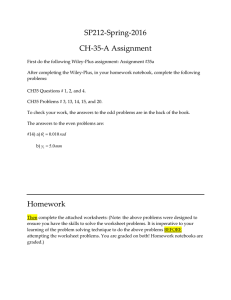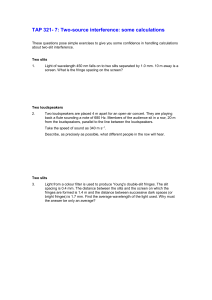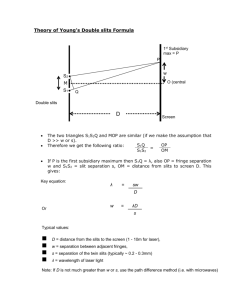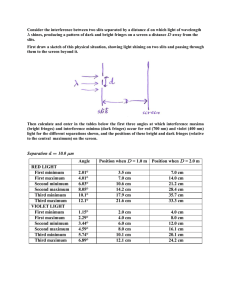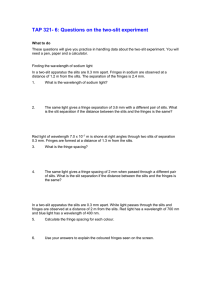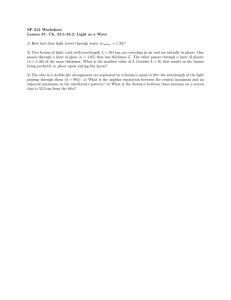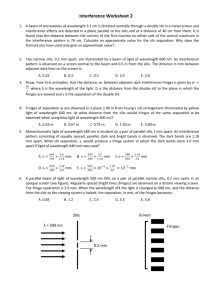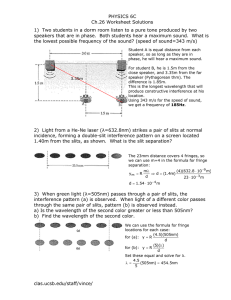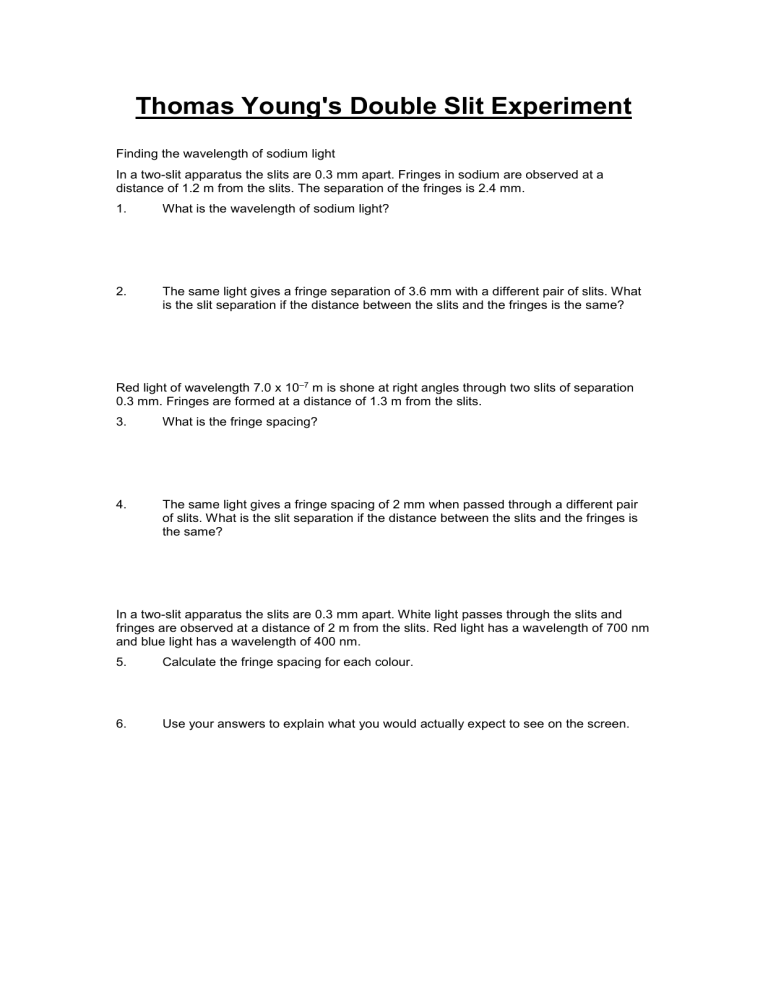
Thomas Young's Double Slit Experiment Finding the wavelength of sodium light In a two-slit apparatus the slits are 0.3 mm apart. Fringes in sodium are observed at a distance of 1.2 m from the slits. The separation of the fringes is 2.4 mm. 1. What is the wavelength of sodium light? 2. The same light gives a fringe separation of 3.6 mm with a different pair of slits. What is the slit separation if the distance between the slits and the fringes is the same? Red light of wavelength 7.0 x 10–7 m is shone at right angles through two slits of separation 0.3 mm. Fringes are formed at a distance of 1.3 m from the slits. 3. What is the fringe spacing? 4. The same light gives a fringe spacing of 2 mm when passed through a different pair of slits. What is the slit separation if the distance between the slits and the fringes is the same? In a two-slit apparatus the slits are 0.3 mm apart. White light passes through the slits and fringes are observed at a distance of 2 m from the slits. Red light has a wavelength of 700 nm and blue light has a wavelength of 400 nm. 5. Calculate the fringe spacing for each colour. 6. Use your answers to explain what you would actually expect to see on the screen. Answers and worked solutions 1. /dx/L xd / L 2.4 10 3 m 3.0 10 4 m / 1.2 m 6 10 7 m. 2. By simple ratio: x ( 2.4 mm / 3.6 mm ) 0.3 mm 0.2 mm. 3. L/ d x 7 10 7 m 1.3 m / 3.0 10 4 m x 3.0 10 3 m. 4. By simple ratio: x ( 3.0 mm / 2.0 mm ) 0.3 mm 0.45 mm. 5. Red light: x L / d 7 10 7 m 2.0 m / 3 10 4 m 4.7 mm. Blue light: x L / d 4 10 7 m 2.0 m / 3 10 4 m 2.7 mm.
